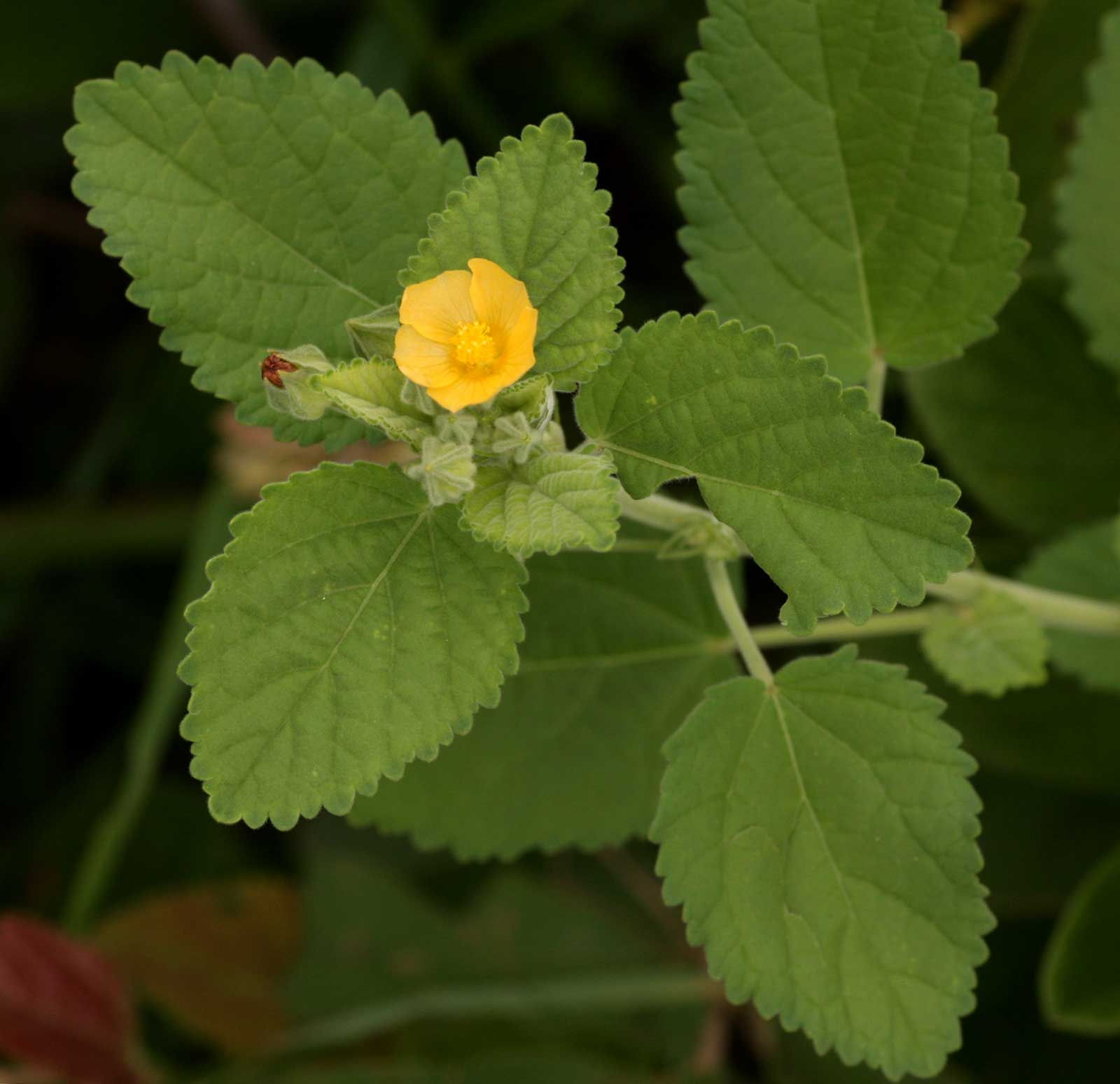Bala botanical name is Sida cordifolia. Sida cordifolia is perennial herb that grows 30mts in height. Bala Leaves are oblong or ovate and are 2.5-7cm long and 2.5-5cm broad with 6-7 veins. Bala leaves are serrate, truncate and heart-shaped. Plant bears small, solitary, axillary and white or yellow colored flowers. Both Bala roots and stems are stout and strong. Bala Roots are bitter in taste, odorless and grayish yellow in color.
Tap roots are generally branched at the tip. Bala Fruits are moong sized, disc-shaped and velvety in upper half about 6-8mm in diameter. Bala Seeds are smooth and grayish black in color and are called bajibanda in Ayurveda. Flowering season of plant is August to December and fruits appear from October to January.
Classification
Habitat
Sida cordifolia is commonly known as bala, it is a common weed that grows along wastelands and roadsides and is native to India. Bala is found throughout tropical and sub-tropical regions of India and Sri Lanka. It is considered as invasive weed in Africa, Australia, Hawaiian island, Southern United States and New Guinea.
Vernacular Names
- Latin– Sida cordifolia
- Common– Country mallow, Heart-leaf sida
- Sanskrit– Badiyalaka, Bala, Baladaya
- Bengali– Berela
- Assamese– Bor sonborial
- Hindi– Kharinta, Barial
- Kannada– Chittuharalu, Hettuti-gida
- Malayalam– Katturam
- Tamil– Chittamuttie
- Telugu– Chirubenda, Mailmanikkam
- Marathi– Bala, Chikana, Tupkaria
- Oriya– Bajromuli, Bisiripi
- Marathi– Chikana, Karaiti
- Gujarati– Jangli methi
- Chinese– Yuan ye jin wu shi hua, Ke dong, Xin ye huang hua ren
- French– Herbe de douze heyres
- Japanese– Maruba kingojika
- Nepalese– Balu
- Russian– Sida Kordifolia, Sida Serdtselistania
- Spanish– Escoba Negra, Escobilla, Llima
- Thai– Ya khat bai pom
Ayurvedic Properties
|
Hindi / Sanskrit
|
English
|
|
Rasa
|
Madhura
|
Taste
|
Sweet
|
|
Guna
|
Laghu, Snigdha, Pichila
|
Physical Property
|
Light, Unctuousness, Sticky
|
|
Virya
|
Sheeta
|
Potency
|
Cold
|
|
Vipaka
|
Madhura
|
Metabolic Property (After Digestion)
|
Sweet
|
Effects on Doshas
It balances all three doshas (Vata, Pitta & Kapha).
|
Charak Samhita
|
Sushrut Samhita
|
|
Prajasthapan– Group of herbs promoting fetal health.
Brihamneeya – Herbs used for strengthening and nourishment of body.
Balya – Herb used in the strengthening of body.
Madhurskanda Group of herb with sweet taste.
|
Vatashasmana – Group of herb to balance vata dosha.
|
Practical Uses
- Bala is anti-inflammatory in nature and it is used to reduce the inflammation of wounds and eyes. Its external application is used to reduce arthritis pain and other joint stiffness. Its external paste is used in ophthalmic disease and wound healing.
- Oil prepared from this herb is very effective for the sufferers of cervical spondylitis, paralysis and facial paralysis.
- Helps in the absorption of both water and nutrients from the intestine and very effective to control the motility of intestine. Due to these properties this herb is very effective in irritable bowel syndrome or grahani.
- It is also used to reduce petechial hemorrhage and is used as cardiac tonic.
- Bala is used to treat both male and female infertility. In males it increases sperm count and used to increase motility of sperms. In Ayurveda this herb is called vrishya i.e. Aphrodisiac. It is used to treat male erectile dysfunction and premature ejaculation.
- It helps to rejuvenate urinary system and this herb act as diuretic and helps to treat cystitis.
- Bala herb is used to reduce chest congestion and it is very useful for bronchitis, asthma and stomatitis.
- Root infusion of Sida cordifolia is very effective for nervous and urinary system disorders. It is also used for treating blood and bile disorders.
- It is used to pacify all three dosha vata, pitta and kapha.
Parts used
- Bala Roots
- Bala Bark
- Bala Leaves
- Bala Flowers
- Bala Seeds
Dosage
- Powder – 3-6gms
- Juice extract – 10-20ml
- Decoction – 50-100ml
Cautions
Sida cordifolia contains ephedrine and excessive use of these herb causes:-
- Insomnia
- Anxiety
- Nervousness
- Rise in blood pressure
- Memory loss
- Stroke



